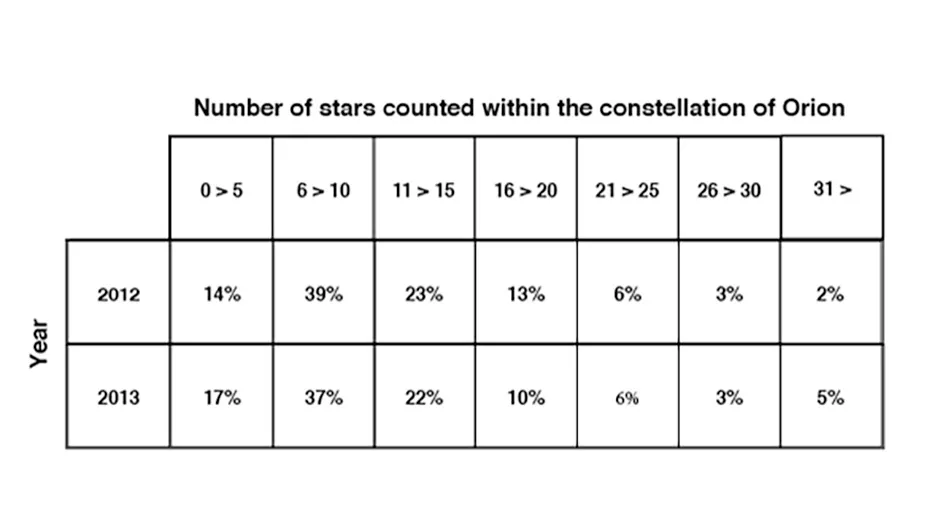Back in February we told you how to get involved with Star Count 2013, a nationwide survey that endeavoured to reveal the effect of light pollution on the UK’s dark skies, and now the results are in.
In this year’s survey, the fourth since 2007, participants were asked to count the number of stars they could see in the constellation of Orion.
Region to region, the results have revealed a marked difference in quality, with over half of those surveyed experiencing severe light pollution and five percent enjoying really dark skies.
This year, 54 percent of the 1,364 people who took part in the survey were only able to spot 10 or fewer stars, suggesting heavily polluted skies.
But it wasn’t all bad news, this year’s survey did see the number of people able to spot more than 31 stars, indicative of very dark skies, rise from two to five percent.

This increase could be down to some of the schemes already in place to combat the effects of light pollution, like the efforts being made by the UK’s national parks to achieve official dark sky status – the Brecon Beacons have just become the latest park in the UK to be awarded the title of International Dark Sky Reserve.
Sir Andrew Motion, President of the Campaign to Protect Rural England who, alongside the British Astronomical Association, run the Star Count survey, recognised the improvements but was eager to stress that problems still remained,
“It is heartening that the number of respondents enjoying truly dark skies, able to see more than 31 of Orion’s stars, rose to five percent, but this is still depressingly few,” he said.
